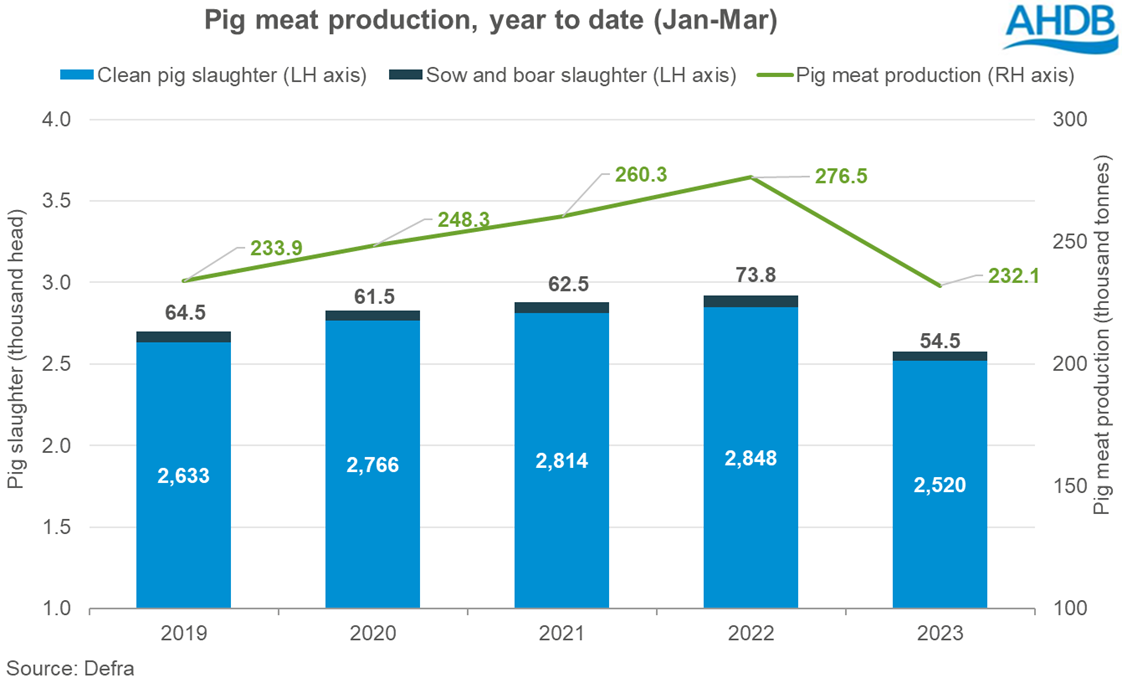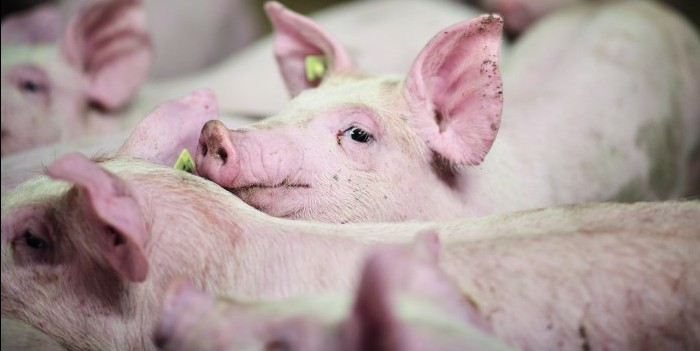The ongoing tight supplies of UK pigs is likely to support the pig price for the foreseeable future, according to AHDB.
Defra’s latest monthly production figures show that the UK produced 83,000 tonnes of pig meat in March, a decline of 18% (-18,600 tonnes) on the record high production in March 2022. This is the lowest recorded production for the month of March since 2019 when both reduced slaughter numbers and lower carcase weights impacted volumes, AHDB analyst Freya Shuttleworth said.
Clean pig slaughter stood at 898,700 head for the month, a 15% (-160,200 head) decline from the record high kill in in March last year and 8% below the five-year average. Reduced slaughter numbers are driving the declines in production as carcase weights have remained steady at 89kg, Ms Shuttleworth added.
Production for the first three months of this year has totalled 232,100 tonnes, 16% (-44,400 tonnes) behind the same time last year, in line with AHDB’s January Q1 forecast of 230,000 tonnes. Clean pig kill has totalled 2.52 million head in the first 3 months of 2023, a 12% (-328,300 head) decline year on year, again in line with AHDB forecast.
“Production for Q2 is forecasted to decline further with some industry commentators stating that the height of the shortage of pigs may likely be felt in May,” Ms Shuttleworth added.

“These tight supplies will likely keep prices supported for the foreseeable, with the EU also expecting further production declines this year. However, demand is also a crucial factor with the cost of living crisis impacting on consumer purchases.”
In the 12 weeks ending 19 March, sales volumes of pork in the retail market fell by 3.5% year on year, while inflation-driven price rises resulted in prices paid increasing 12.5% during the period.
“This is a little above our projected demand decline of 3%, however with the approaching BBQ season there is opportunity for pork volumes to grow. Most product categories saw volumes decline, driving the overall trend, but sausages, mince, burgers and grills, and pork ribs recorded growth in the 12-week period,” Ms Shuttleworth added.




